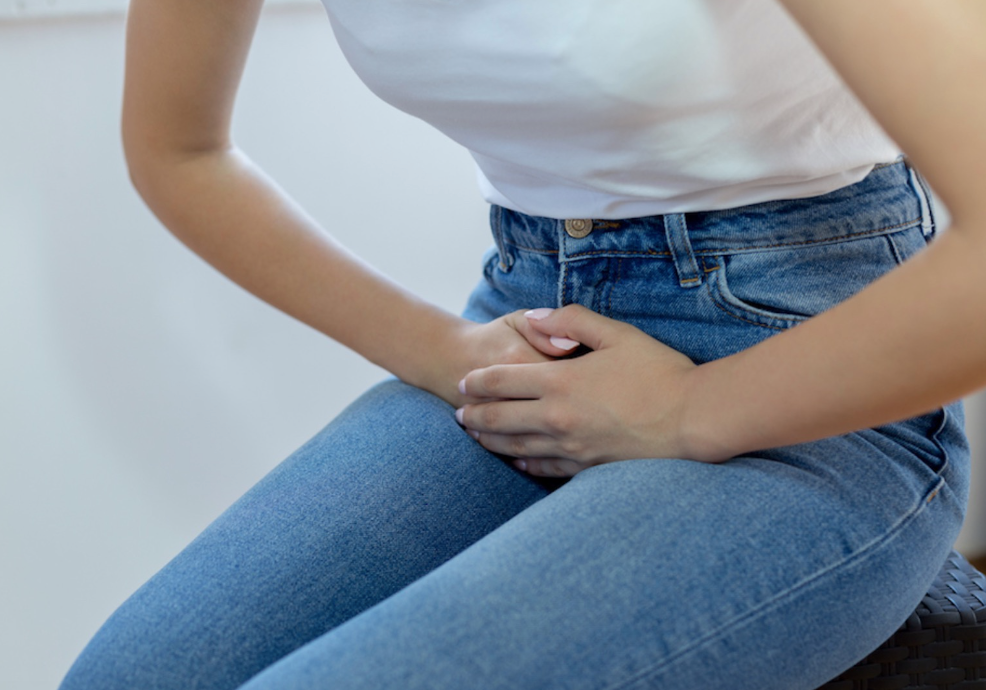What you need to know about endometriosis

Endometriosis affects approximately 1 out of 10 people with uteruses but it takes on average 10 years to diagnose.
Let that factoid sink in for a moment.
This disease affects approximately 200 million people worldwide but it can be hard to tell because endometriosis can be “invisible”. Too many cases go undiagnosed because people who suffer from it are told repeatedly that it’s just “really bad period cramps”.
Because period cramps come with the territory, many expect discomfort during their menstrual period and often dismiss the pain as normal period symptoms. This is in part why there are such low diagnoses for endometriosis.
What is endometriosis?
Endometriosis is a disease where tissue, similar to what lines the uterus, is found outside the uterus. In most cases, it affects pelvic organs (ovaries and fallopian tubes) but in other, albeit rare, cases, the endometrial tissue may spread to the lungs or the brain, resulting in complications such as kidney failure or colon problems. Endometriosis is commonly misrepresented as a reproductive disease when it’s actually a full-body disease.
What causes endometriosis?
When your body prepares for your period, the endometrial tissue in your uterus thickens, breaks down, and bleeds out with each cycle. And during this, you experience cramping.
But remember, with endometriosis, the difference is the tissue is found outside the uterus. And so the tissue still thickens and breaks down but it becomes trapped because it can’t exit the body.
Possible explanations of why endometriosis occurs include:
- Retrograde menstruation: Instead of making its way out of your body, menstrual blood containing endometrial cells go back through the fallopian tubes and into the pelvic cavity. The endometrial cells then attach themselves to the pelvic organs, where they continue to grow, thicken, and bleed during each menstrual cycle.
- Peritoneal cells (aka induction theory): When hormones or immune factors turn the cells on your inner abdomen into endometrial-like cells.
- Embryonic cell transformation: Hormones like estrogen can transform cells that are in the early stages of development into endometrial-like cell implants during puberty.
- Endometrial cell movement: Endometrial cells may move to other parts of the body by way of blood vessels or the lymphatic drainage systems.
- Immune system disorder: A compromised immune system may not be able to defend against endometrial-like tissue that's growing outside the uterus.
Endometriosis symptoms
The number one symptom is intense period cramps and pain. Although many people experience cramping during their menstrual periods, those with endometriosis typically describe menstrual pain that's much worse than usual.
Other symptoms include:
- Pain during or after sex
- Pain with bowel movements or urination
- Excessive bleeding (both during your period and between periods)
- Infertility
- Fatigue
- Diarrhea
- Constipation
- Bloating
- Nausea
- Food intolerance
- Gastrointestinal issues
- Urinary problems
The pain may also increase over time. Symptoms of endometriosis can begin in the early teens or later in adulthood. Symptoms may be constant or may come and go with each menstrual cycle. In addition, the severity of the pain isn't necessarily a reliable indicator of the extent of the condition. You might have mild endometriosis with severe pain or have advanced endometriosis with little or no pain. It’s important to note that endometriosis is different in each person.
How is endometriosis is diagnosed?
The first thing a healthcare provider will do is assess your symptoms, as well as both medical and menstrual history. If endometriosis is suspected, they may also perform:
- A pelvic exam
- A pelvic ultrasound (sonogram)
- A laparoscopy (which sometimes leads to a biopsy)
Endometriosis treatments
Right now, there’s no cure for endometriosis, but the symptoms are manageable with various treatments.
- Lifestyle changes: Alternative treatments like exercise, diet changes, and acupuncture may sometimes help alleviate the symptoms but there is currently little research and evidence for their effectiveness.
- Medications: A healthcare provider may suggest an over-the-counter pain medication or other hormone medication to help manage the symptoms.
- Surgery: A doctor might suggest a laparoscopy to explore and surgically remove or burn away problematic tissue.
- Hysterectomy: Removing the uterus, fallopian tubes, and sometimes the ovaries may be considered in severe cases but only as a very last resort because it results in surgical menopause.
Whether it’s to lessen the pain or increase chances of pregnancy, the treatment will vary depending on each person. For some people, the symptoms are mild enough that they choose not to have treatment at all, but endometriosis should be monitored as it can get progressively worse.
Many cases of endometriosis go diagnosed for so many years. This is in part because talking about feminine health and periods was something that wasn’t openly discussed for so long. This is slowly but surely changing as more and more people speak up about their experiences. This helps open a dialogue and create a safe space where others feel comfortable sharing, asking questions, and seeking help as well. Celebrities like Emma Roberts, Lena Dunham, Olivia Culpo, and Kayla Itsines have all spoken out about their experiences with endometriosis. While some discomfort around menstruation can be expected, endometriosis pain can be much worse. You know your body best. If you feel that something is not right, see your doctor.
Muff love



